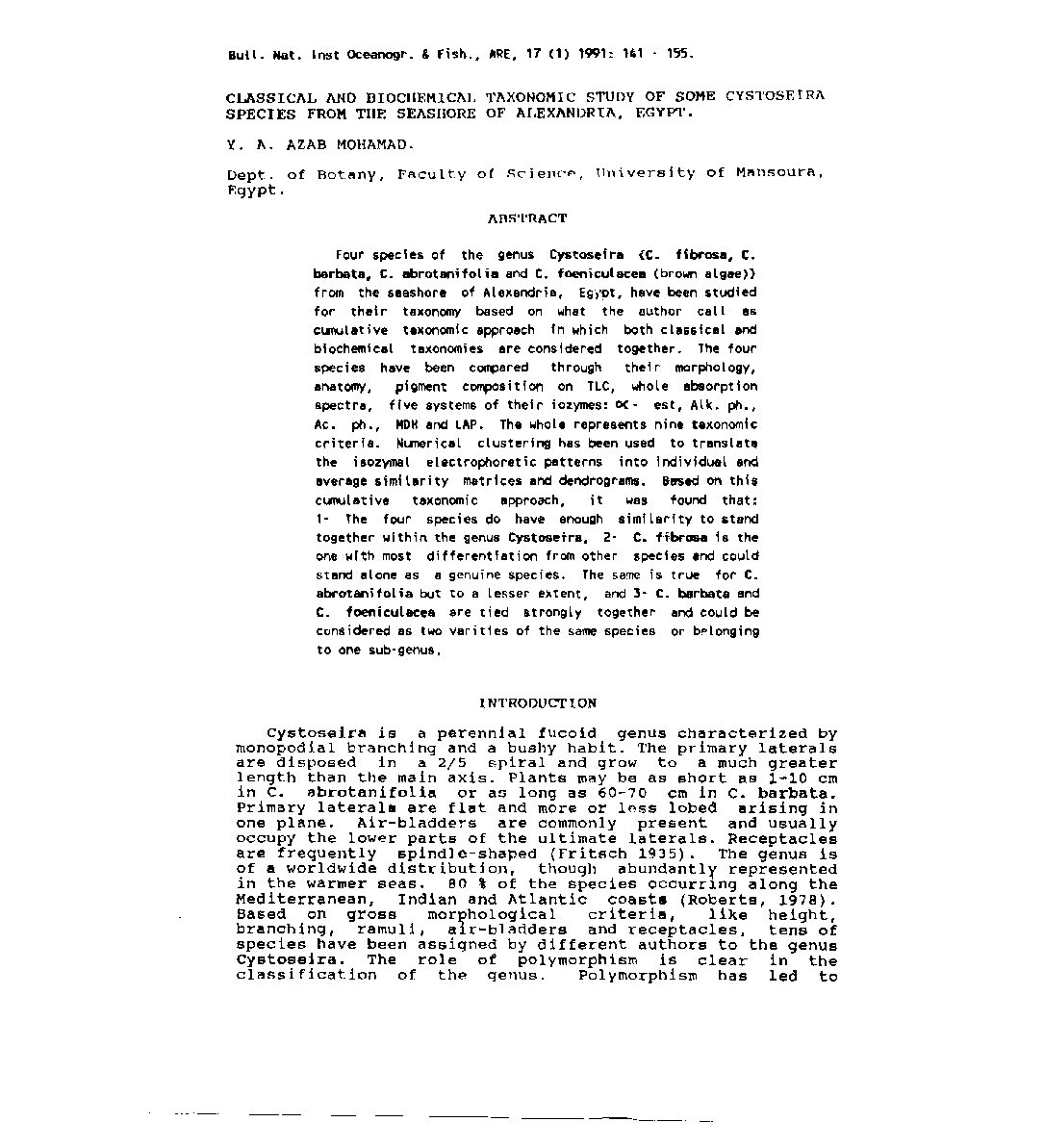Categories
vol-17CWSTER ANALYSIS OF THE CONTINENTAL SHELF SEDIMENTS
OFF EGYPT
M.A. EL-SABROUTI., M.KH. EL-SAYED, AND B. MAHMOUD
Oceanography Dept. Fac. of Sc., Alex. Univ., Alexandria.
ABSTRACT
The area from Alexandria (west) to Arish (east) is
statistically differentiated into pubregions. using the
total elemental concentrations of the aedilllentl covering
this area. As a result of the employed test (cluster
analysis) two regions (from Agaml to Abu Qir and from
Rosetta to Arish) were clearly distinguished.
INTRODUCTION
The geology and depositional processes of the continental
shelf zone of the Mediterranean Sea off Egypt was previously
studied by several investigators. The classification of this
area into a nUmber of zones or regions was a subiect of
several research stUdies. Most of these studies dealt with
the morphologic features, lithofacies, mi~eralogy and type of sediments (eg. Koleif et al., i969; summerhayes et al.,
1978; EI-Sayed, 1979 and 1981; Coleman et al., 1981;
EI-Sammak, 1987, Sestini, 1989; E1-Sabrouti and EI-Sammak,
1990, and others).
The investigated area extends from Alexandria :to Arish
and covers most of the continental shelf off Egypt. Several
surveys have been carried out in the area slnce 1800, as
well as several geological investigations were carried out
along the area of stUdy (eg. by Mohamed, 1968; EI-Sayed,
1977; ‘Ross and uchupi, 1977; EI-Wakeel and EI-Sayed, 1978;
Toma and Salama, 1980; Toma et al., 1980; Beltagy et al.,
1983 and 1985; EI-Sammak, 1987 and several others.
Based on the bathymetry of 1919/1922 Hisdorp and sestini
(1976) and Said (1981) subdivided the shelf morphol09ically from west to east into A1exandira shelf, Abu Q1r Bar’
Rosetta cone, Burullus shelf, Gamasa shelf and Port Sa d
shelf. A shelf more than 70 Km has been built by the
sediments of the Nile River (Emery et al., 1966).
Coleman et ale (1981) used extensive side scan and
dynamical oceanographic data of the Nile delta shelf east of
Damietta distributary and have contrributed to the studies
of shelf morphology, lithofacies relationships and sediment
transport processes. They pointed out the presence of four
distinct morphologic zones. The first covered with
flocculated silty clays. The second is a broad sand belt,
extending from Damietta mouth eastwards and curves towards
the coast. The third zone is a belt of silty clay containing
a large number of algal mounds that rise as much as 10 m
above the sea floor. Zone four is characterized by mud
debris and shelf-edge slumps of probably modern deposits.







